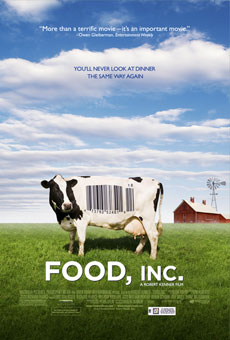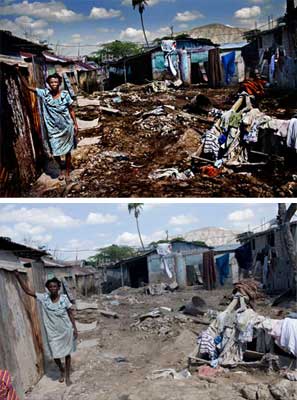Site informationRecent Blog Posts
Blog Roll
|
PedagogyNew Pedagogy Resource: Guide to Teaching Visual Rhetoric
Submitted by timturner on Tue, 2009-09-29 13:45
A new page has been posted to the Assignments section of Viz., a Guide to Teaching Visual Rhetoric that provides a brief overview of the theory and practice of visual rhetoric and offers some ideas for incorporating instruction in visual rhetoric into composition classrooms, as well as a number of resources. The intoductory guide is designed to complement the sample assignments and theory pages. If you are interested in including visual rhetoric into your classroom but aren't sure how, we hope this page will provide you with a useful resource for getting started. Guide to Teaching Visual Rhetoricby Tim Turner What is Visual Rhetoric? As a discipline of rhetorical study, visual rhetoric can refer to a wide variety of analytical and pedagogical practices. Essentially, however, it refers to the practice of analyzing and/or describing how images communicate meaning or advance arguments. It may be thought of as the rhetorical analysis of images using the familiar vocabulary of rhetorical theory (such as ethos, pathos, and logos), but with a supplementary vocabulary unique to the analysis of the visual (e.g., with reference to color, graphic design, iconography, etc.) Although the object of visual rhetorical inquiry can be virtually limitless as long as images of some kind are involved, in rhetoric courses these subjects frequently include advertising, iconic or contemporary photography, film, maps, and web design. Additionally, in a recent review article on the current state of visual rhetoric, Paul Messaris articulates four key questions for establishing the broadest framework of such study:
Each question aims to unsettle conventional wisdom about the difference between images and words, thus complicating the supposed "differentiation of the verbal and the visual" that David Blakesly has also challenged. Aims of Visual Pedagogy The basic paradigm for teaching composition (exemplified in the "controversy model" often employed introductory rhetoric courses) involves leading students first to describe and analyze the components of persuasive written arguments by others (rhetorical analysis) before leading them to write such persuasive arguments themselves (advocacy). The aims of visual pedagogy are similarly twofold: by including instruction in visual rhetoric in the curriculum, instructors can help students
Analysis as visual literacy: Today, digital technology, social media, YouTube, and the omnipresence of cell-phone cameras (among other developments) have made images a ubiquitous part of everyday communication networks. As citizens-and as consumers-all of us are confronted with visual presentations of information and argumentation on a near-constant basis. For this reason, instructors are encouraged to think of visual rhetoric not as a supplement to the curriculum, but as a vital component in the process of helping students become more literate participants in these networks. Creation as visual competency: In addition to helping students become more literate and active interpreters of visual communication, visual pedagogy can also play a part in helping students become active participants in these exchanges by fostering visual competency. Here, the goal is to help students successfully deploy visual arguments of their own, either in support of mostly written arguments (e.g., using images or graphically presented statistical information to support the arguments of an advocacy paper) or in place of mostly written arguments (e.g., substituting a short film, slidecast, web site, or brochure designed using professional software in place of an advocacy paper). Incorporating Visual Rhetoric in the Composition Curriculum There are many ways to incorporate visual rhetoric and visual pedagogy into the curriculum for composition or literature courses. The following breakdown distinguishes between short- and long-form projects. Short-form projects (1 - 2 class meetings)
Long-form projects (from several class meetings to semester-length projects)
Available Technologies and Applications Flickr - Massive database of images, many of which are licensed using Creative Commons. Google Maps - Using "My Maps" or Google Earth, the creative possibilities here are almost limitless. InDesign - This professional Adobe software is used for desktop publishing of items like pamphlets (how-to guide). iMovie - Software for editing and creating films (how-to guide).
MindMapping - This software enables students to brainstorm by creating visual representations of the thought-process (how-to guide). Viz. - This web site, maintained by the visual rhetoric project in the CWRL, includes an ongoing blog on visual culture, a visual rhetoric assignments database, and introductory pages on theories of visual rhetoric. YouTube - This ubiquitous site doubtless needs no introduction. A virtually endless resource for video content.
Additional Resources Viz.: A web site for visual rhetoric, visual culture, and pedagogy, maintained by the DWRL Viz. collection of visual rhetoric assignments Viz. bibliography of resources on visual rhetoric No Caption Needed: Iconic Photographs, Public Culture, and Liberal Democracy Sociological Images: Inspiring Sociological Imaginations Everywhere Information Aesthetics: Where form follows data "Visual Rhetoric" (Wikipedia) "Visual Rhetoric" (Wikibooks) "What is Visual Rhetoric, and What is its Tradition?" by David Blakesly "What's Visual about Visual Rhetoric?" by Paul Messaris // Quarterly Journal of Speech 95.2 (This review article is available as a full-text PDF through JSTOR) Tags:
Blogging Pedagogy: Or, How to Make Students Read Musicals as Rhetorical Texts?
Submitted by Rachel Schneider on Mon, 2009-09-28 18:10
Andi, I enjoyed reading your post from Saturday, as I'm struggling myself to think about how to teach visual rhetoric in my classroom-although, the concerns I'm undergoing are much different from yours. There may be ethical concerns about using podcasts to teach a variety of songs united around a different theme, but most of what I do will involve looking at pretty pictures. Tags:
Exposure to Exploitation
Submitted by Andi on Sat, 2009-09-26 11:07
This past week my students and I were considering the representation of the Vietnam war in network news coverage and in documentary films such as Peter Davis' Hearts and Minds (1974). Several of the images we considered depict bodies in pain or men, women, and children dead or dying. As we discussed the appeals to the emotions of the viewer at work in these images, the conversation gradually turned to the ethics of the photographers and filmmakers but I left the classroom wondering about the ethics of teaching these images.
Tags:
Review: Food, Inc.
Submitted by timturner on Mon, 2009-06-29 14:25
***** Assignments for Visualizing the Writing ProcessThe group of assignments below present a number of opportunities to train students to think visually about the writing process. Although they are not explicitly designed to teach visual rhetoric, or to inculcate the skills of rhetorical analysis with visual subjects, they are nonetheless implicitly designed to offer students fresh perspectives on the writing process. "Perspectives" is a key term, since these projects ask students to use visual processes to reorient themselves to their writing, by producing visual objects such as annotated outlines, mindmaps, and other brainstorming projects that are more than text-based. The skills sets required here range from the simple (using the highlighting or track changes features of Microsoft Word) to the more complex (using NovaMind or OmniGraffle to conceptualize written arguments). These assignments are offered as a sample of the kinds of methods an instructor interested in visual rhetoric might adopt in the classroom in order to bring the techniques of visual analysis and visual processing together with writing pedagogy. Organization Using NovaMind by Catherine Bacon (.pdf download) Outlining Essays Electronically with bubbl.us – A Web-Based Solution by Ty Alyea (.pdf download) Peer Review and Commentary with Microsoft Word by Michelle Jerney-Davis (.pdf download) Text Coloring Assignment by Catherine Bacon (.pdf download) Using NovaMind to Brainstorm for Papers by Liz Jones-Dilworth (.pdf download) Using Track Changes for Peer Review Assignment by Lena Khor (.pdf download) Tags:
Digital Manipulation and the Ethics of Representation
Submitted by micklethwait on Sun, 2009-04-26 15:15
An article this week on Stinky Journalism, Danielle Mastropiero's "Photoshopped Images Booted from Press Photo Contest," calls to mind a couple of other similar incidents in recent memory: first, Adnan Hajj's laughably bad Photoshop manipulations of smoke plumes over Beirut during Israel's summer '06 bombing campaign; and second, Iran's equally laughable manipulation of publicity photos from their summer '08 test missile test launch.
Click on 'voteringen' in the menu of this Flash-animated comparison of Christensen's submitted photographs, their RAW files, and the Photoshop auto-corrections. Assignments Section Updated
Submitted by timturner on Wed, 2009-04-01 11:58
Thanks to the hard work and creativity of instructors in the Computer Writing and Research Lab here at UT, we at viz. have been able to expand and update the assignments section of our site with a number of new classroom activities oriented around visual rhetoric and culture. If you are looking for new ways to include multimedia, visual, and digital environments in the classroom, or for ways to encourage students to produce multimedia projects of their own, please take a look at the new offerings. First-timers and veterans alike will find a number of great projects. In the coming weeks, we hope to add a few more assignments to the pages, and to that end, we encourage assignment submissions by viz. readers. Have a successful assignment or classroom activity on visual rhetoric and culture that you'd like to share with the world? Please use the contact page to get in touch with our editors. Pending review, your assignment would be posted, with attribution, for other viz. readers to adopt and adapt for their own classes. We would also be interested in hearing about successful tweaks to existing viz. assignments, many of which are designed as templates for implementation in more specific classroom contexts. For example, our friends over at www.auburnmedia.com found a way to tweak the Comparison and Rhetorical Analysis assignment by pairing it with a video about the developing world called "The Other Side of the Coin is Rusting." Witness the artifact of the process
Submitted by Jillian Sayre on Sat, 2009-02-21 11:56
Derek Mueller over at Earth Wide Moth posted an interesting meditation on Google's recent mapping of the famously lost city of Atlantis. "The conspiracy doesn't interest me all that much. Instead, I'm struck by the impression: the stamp left by the "systematic" tracing, the residue of the surface-to-sea-floor method (a term others have smartly untangled it into meta-hodos or something like 'beyond ways', even 'ways beyond'; this etymological dig lingers with me). The deep blue grid of "bathymetric data" elicits questions: why don't we see these in the adjacent areas? What was it about this boat, this collection process, this translation from sound to image, that left behind the vivid trails?" Tags:
Interview of Robert Hariman and John Louis LucaitesIn the fall of 2008 Viz. contributor Nate Kreuter interviewed Robert Hariman and John Louis Lucaties about their book No Caption Needed and their blog of the same name. Here is the transcript of that interview. * * * |
viz.
Visual Rhetoric - Visual Culture - Pedagogy
Site informationRecent Blog Posts
|
Pedagogy |
 Image Credit: Peter Davis, Hearts and Minds
Image Credit: Peter Davis, Hearts and Minds This weekend, partly out of personal interest and partly in relation to a project I'm working on for the CWRL, I saw the new documentary
This weekend, partly out of personal interest and partly in relation to a project I'm working on for the CWRL, I saw the new documentary 

Recent comments
2 years 29 weeks ago
2 years 44 weeks ago
2 years 44 weeks ago
2 years 50 weeks ago
3 years 4 weeks ago
3 years 4 weeks ago
3 years 4 weeks ago
3 years 6 weeks ago
3 years 6 weeks ago
3 years 6 weeks ago